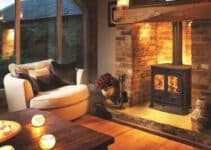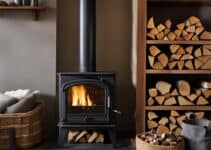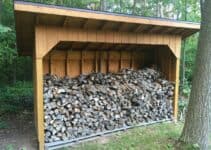If the wood has too much moisture, it will hiss and steam. The wood’s emitted energy goes toward removing its excess moisture, so it doesn’t actually “burn” or produce much heat.
But why do logs go black? Logs go black due to mould and mildew, frequently found on firewood, are the black substance. Typically, well-maintained firewood has more shades of brown, tan, and grey.
If it’s black, it was most likely left exposed while stored in the woods. Wood begins to decay if it becomes damp and remains wet for extended periods.
A similar issue can occur when green (recently cut) wood is stored under a tarp.
It is common to practice storing logs and firewood outside, in places like gravel pits, concrete lots, and sunny fields. Wood should be seasoned for a minimum of two months before being burned, during which time it should be kept covered with at least one exposed side.
In my experience, most types of wood produce the most heat after being seasoned for a full year. Although it takes two years to season, oak makes excellent fuel.
An annoying situation is when firewood gets black and won’t burn, especially when it happens frequently. What is the primary reason a fire doesn’t catch and turn black?
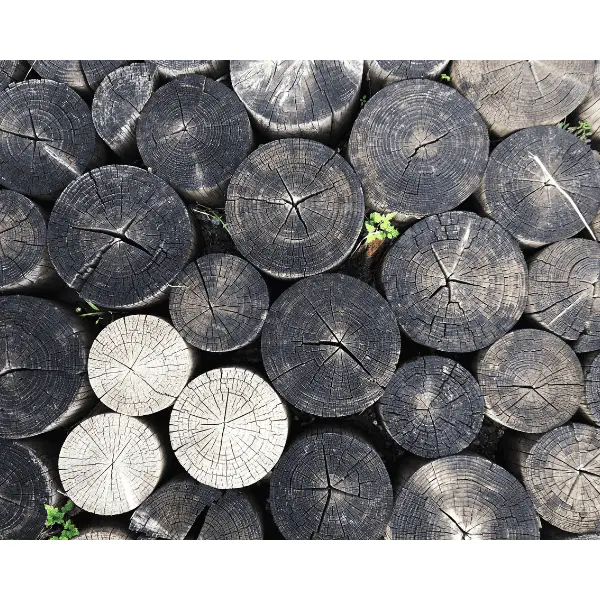
Why Does Some Wood Turn Black?
Wood that becomes black and either doesn’t burn, or burns briefly is frequently caused by wet wood. Firewood will be challenging to start and maintain a flame if it is “green” (meaning fresh), stored outdoors in an unfavorable location, or not well seasoned.
Even if it catches fire, there’s still a chance it will explode due to the combination of internal pressure and steam caused by the wood’s wetness.
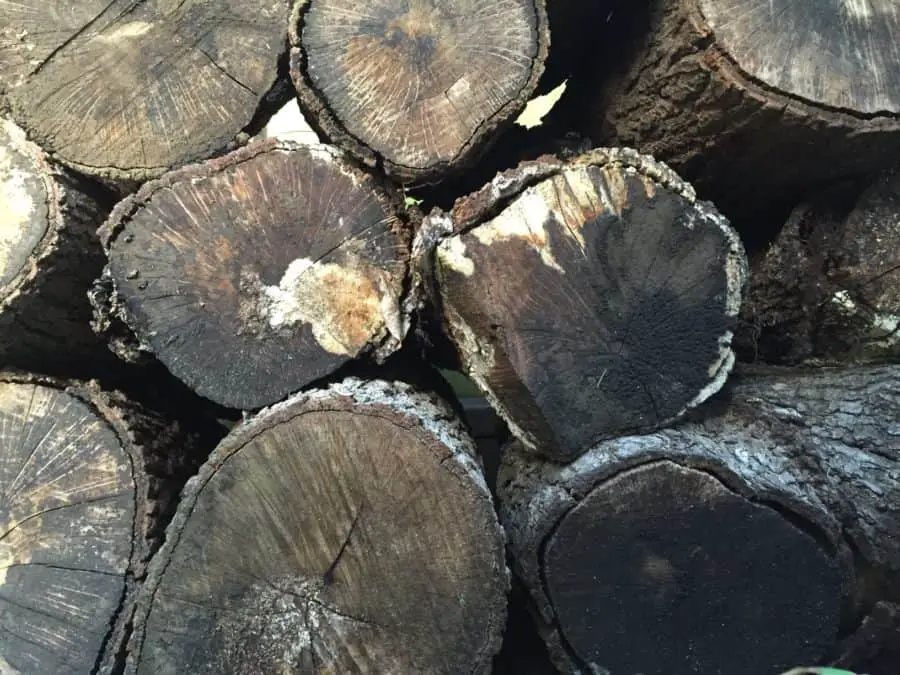
Using log racks is the most convenient method to keep your firewood organized and accessible whenever needed.
The strong structural integrity of these racks will prevent your firewood from falling on the ground. A tarp should cover the top 12 inches of your firewood for protection.
At What Temperature Does Wood Turn Black?
At about 600°C, a wood fire in a home burns. Depending on the wood’s variety and condition, the temperature can change. Wood ignites nearly instantly when placed in a 700°F oven.
The wood eventually chars at 450°–500°F oven temperatures before lighting after several hours in most cases.
Wood that chars slowly absorbs and quickly reacts with oxygen to generate “pyrophoric carbon.” This generates heat, which, under specific circumstances, eventually causes the burned wood to burn up at temperatures considerably lower than those needed to ignite the primary wood.
Firewood Turning Black – Logs Going Black But Not Burning
The wood is usually far too damp and poorly seasoned, which is the main cause of wood turning black and not burning correctly.
But other factors might also play a role in why woods turning black and doesn’t burn. We shall examine all the causes of poor firewood burning as we go deeper.
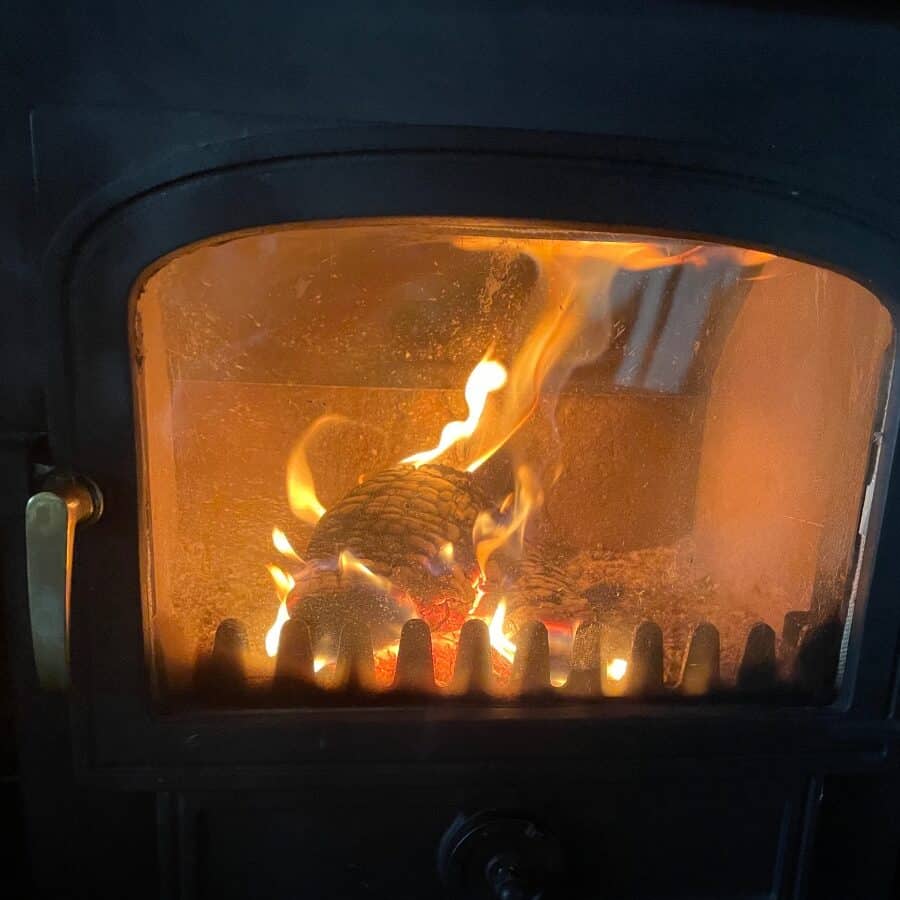
Causes Of Firewood Blackening
Reasons Why Firewood Doesn’t Burn or Turns Black
- Unseasoned and wet wood: It’s challenging to start and maintain a fire with wet and unseasoned wood.
- How you choose your wood: When it comes to lighting and maintaining a fire, hardwoods are always superior to softwoods, aside from utilizing green or unseasoned wood.
- Large firewood logs: large firewood logs will not burn correctly. They will eventually charge, turn black, and quickly go out.
- Inadequate fire building: Before adding larger pieces, always light your fire with little bits of wood.
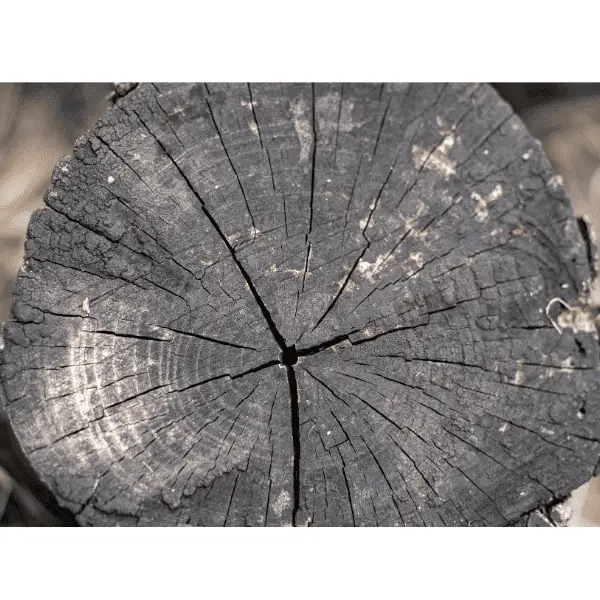
Issues Are Caused By Moisture
Greenwood has not yet dried out; thus, it still has a lot of water or moisture trapped inside its pores and fibers. It cannot burn at all, much less do so effectively.
Buy seasoned (sometimes referred to as kiln-dried) wood or wait for it to dry. With the appropriate tools, you can even perform your kiln drying.
When storing wood outside, ensure it is raised at least two inches from the ground and protected by a roof, awning, or tarp. As a result, your wood will be kept dry, and vermin and other animals won’t be able to build nests among the logs.
When exposed or on the ground, it will take moisture from the rain and humidity, making it challenging to burn.
Seasoning Is Crucial
Because of this, having seasoned wood stored indoors is considerably safer and more desirable. The wood will remain dry and burn efficiently. To ensure that it burns through, check the moisture content of the seasoned wood before purchasing.
It should be at least 20%. Do your homework and buy it from a reputable vendor who uses a simple, confirmed kiln drying procedure.
The Wood’s Type
You can be burning the wrong kind of wood in addition to green wood needing help to sustain a flame. As firewood, hardwoods are almost always superior to softwoods.
Even with the most efficient kiln-drying method, it is difficult to burn trees that require a lengthy seasoning, such as almonds and oak. However, once they start burning, they’re excellent for log burners, provide hours of warmth and make a cracking noise while burning.
Additionally, water may be extremely squeezed inside the pores of wood that are hard to split, like pecan and pistachio. Even after extensive seasoning operations, lighting may still be challenging in certain situations.
Logs Are Oversized
Big, heavy, thick logs won’t bun. They’ll burn and turn black. They might even start to glow for a brief period before going out. To dry out more quickly and burn more effectively, try to divide huge, spherical logs into smaller pieces. Once a fire rages with kindling and tiny split pieces, only add whole-piece logs.
Unsuitable Fire Building
You must begin your fire with little logs and gradually add larger ones as the coals grow. Any larger chunks of wood will only burn if you do this. They’ll burn and turn black. Anything that does ignite will burn out almost instantly.
Troubleshooting A Log burner
Lighting log burners present unique difficulties, such as burned wood that won’t ignite. There are numerous variables at play, so be sure to look into each of the following:
Keep the fireplace doors open while lighting a fire to ensure ample oxygen for combustion. Create a barrier between you and the fire with a metal curtain.
Grate Setup – If your wood burning stove has a metal grate, you can start the fire using a metal plate.
A few inches of leftover ash from earlier burns should rest below the logs. In this way, the hot embers that fall from the fire will not travel far from the wood, making it easier to start and maintain.
Ensure that your fireplace has adequate airflow by clearing the flue and chimney of any creosote and allowing air to enter and exit the fireplace and chimney freely.
Wood Turns Black When Burning – A Summary
Underseasoned wood is frequently the cause of improperly burning wood. Due to the moisture still present inside the wood, underseasoned wood has a difficult time burning and turns black.
Check the wood’s conditions, where and how it’s stored, the sort of wood, and your fire-building technique if you discover that it consistently doesn’t ignite.
Simple solutions for fireplaces include letting ashes accumulate or purchasing a metal grate. Overall, your wood is probably excessively wet and unseasoned, which is the most likely explanation.
